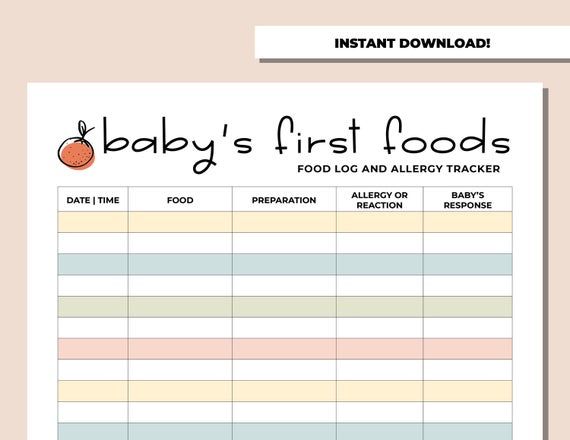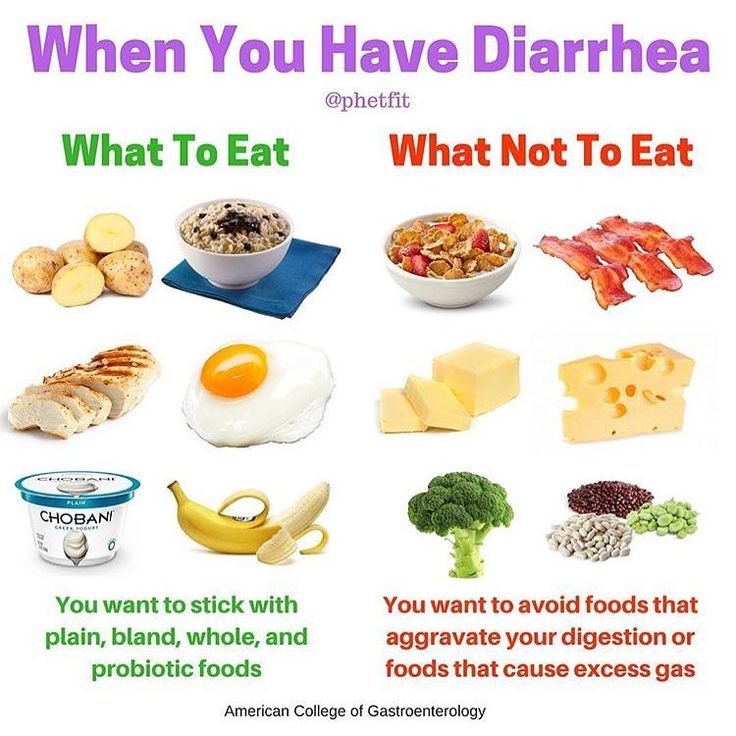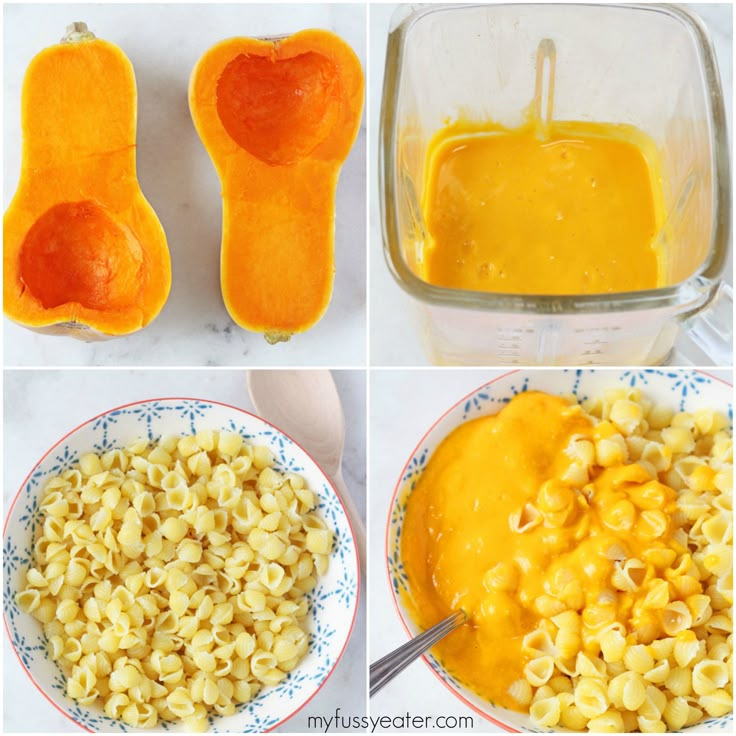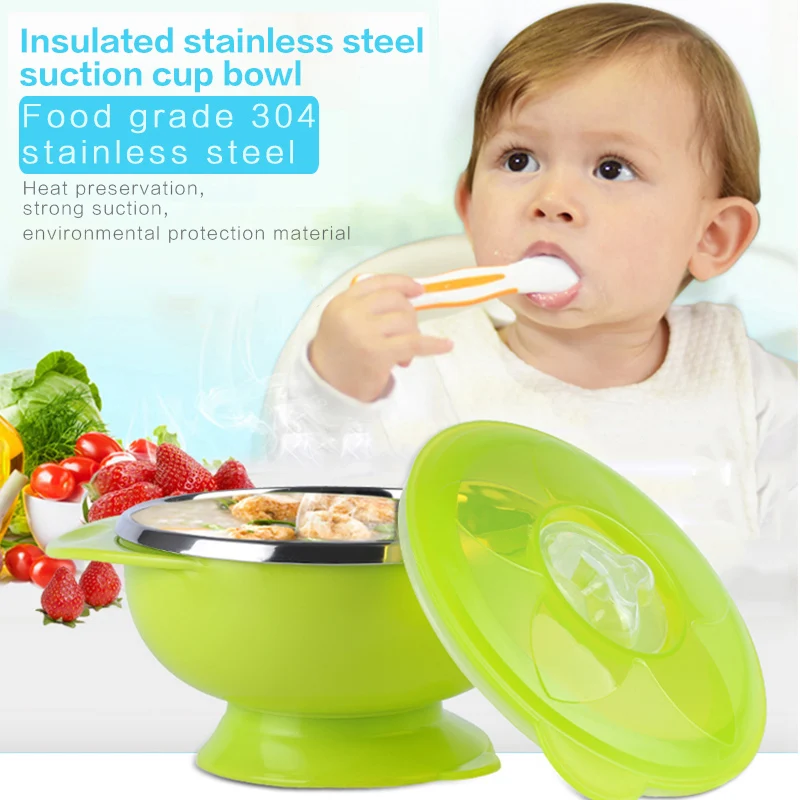Baby food stage 3 when to start
When is a child ready to try thicker solids?
Your baby’s made it through cereal mush, soupy carrots and ever-so-slightly texturized chicken and squash dinners. Now it’s time for the real culinary fun to start — welcome to Stage 3 baby food!
“Once your baby has successfully eaten Stage 2 foods, which have some texture to them, they can start Stage 3,” says Dr. Melanie Custer, a pediatrician at West Bend Pediatrics, Children’s Wisconsin.
How do you know your baby is ready to make the leap from purees to slightly more sophisticated fare? Here, experts and parents weigh in on moving on to Stage 3 baby food. Time to dig in!
What is Stage 3 baby food?
Most jars of Stage 3 baby food are still pretty pureed (hence, the jars), but your little one needn’t be restricted solely to foods that are, for all intents and purposes, mush. Instead, you can steer your budding gourmand toward soft, small pieces of whatever you’re having. Think: cut-up pieces of turkey meatballs, banana chunks and small squares of tofu.
“Stage 3 baby foods are thick blended foods with chewable chunks, such as the kind you find at the grocery store, or small cut-up pieces of easily chewed table foods, which are usually referred to as ‘finger foods’,” says Dr. Kristen Treegoob, a pediatrician at Children’s Hospital of Philadelphia. (Avoid placing chunks of food in blends and purees, as it may cause a choking risk.)
“Stage 3 baby foods are thick blended foods with chewable chunks, such as the kind you find at the grocery store, or small cut-up pieces of easily chewed table foods, which are usually referred to as ‘finger foods.'”
DR. KRISTEN TREEGOOB, PEDIATRICIAN
And be sure to bear in mind that every child is different and develops at their own individual pace. Check with your child’s doctor for baby food recommendations during the first year.
When to start Stage 3 baby food
“Typically, 9 months is the age babies start eating Stage 3 foods,” says Dr. Zulma Laracuente, a pediatrician in Alexandria, Louisiana. “But, generally-speaking, 9 to 12 months is considered a time of slowly transitioning your baby to table food.” (In other words, no more cooking and serving separate meals!)
“But, generally-speaking, 9 to 12 months is considered a time of slowly transitioning your baby to table food.” (In other words, no more cooking and serving separate meals!)
Does that mean you baby is ready to tuck into a T-bone steak with a side of broccoli rabe? No. At least, not in the traditional form. But as long as food is small and very easy for baby to work through, it’s OK.
While the idea of having your 10-month-old feed themselves while you sit down to your own meal probably sounds heavenly, bear in mind, every child gets there in their own time.
“My first child couldn’t wait to eat mashed up meatballs and soft carrots on his own,” says mom of two Jennifer Reilly of New York City. “But my second? Not so much. Aside from puffs, I was still spoon-feeding him at nearly a year!”
Signs baby is ready to start Stage 3 or finger food
As your baby’s oral skills and hand-eye coordination develop, they’re moving closer to being able to feed themselves, either with their hands or a spoon. (Though, according to the Cleveland Clinic, babies usually don’t get the hang of utensils until at least 12 months.)
(Though, according to the Cleveland Clinic, babies usually don’t get the hang of utensils until at least 12 months.)
According to Jenifer Thompson, R.D., an advanced practice dietician at Johns Hopkins in Baltimore, babies can move past traditional baby foods and onto “pick-ups” (finger foods) as their pincer grasp skills are honed.
“By the time baby is between 8 to 12 months old, they should be able to pick up small, soft pieces of finger foods with their finger and thumb and bring them to their mouth,” she says.
Other signs your baby is ready to take meal time into their own hands? They tell you — as only a baby can.
“I knew my son was ready to try table foods when he started grabbing at the spoon every time I went to feed him,” says mom of two Darcy McConnell of Garwood, New Jersey. “Even though he didn’t actually use a fork or spoon for a few months, he loved holding on to them while he picked up his food. It was so cute!”
What Stage 3 foods to start with
Once you’ve hit the Stage 3 phase, (almost) anything goes, as long as it’s the right texture for baby.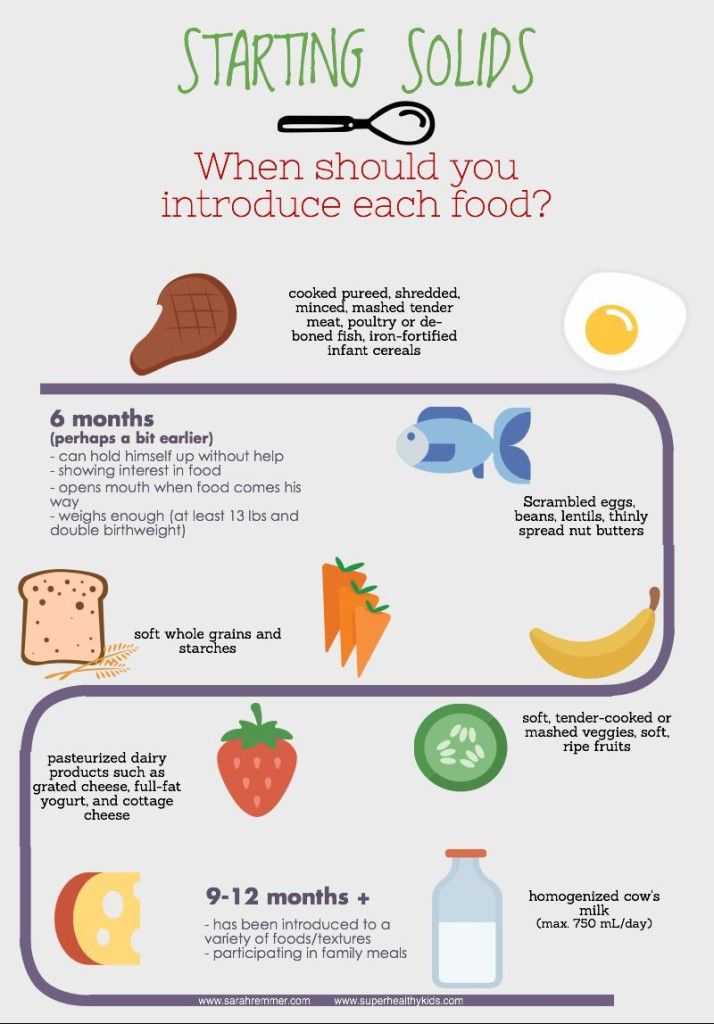 For instance, it’s OK to feed your child what the rest of the family is having for dinner, as long as you take proper precautions, such as making sure food is easy to chew and cut up into small pieces.
For instance, it’s OK to feed your child what the rest of the family is having for dinner, as long as you take proper precautions, such as making sure food is easy to chew and cut up into small pieces.
“Once babies are about 9 months old, they should safely be able to self-feed a variety of foods,” says Treegoob.
At this point in your baby’s life, solid food is starting to make up a significant part of their diet, so it’s important to offer foods that are nutritious. Also, exposing your child to different foods that are nourishing from an early age can help lay the groundwork for good, long-term habits.
“Parents should introduce a variety of healthy foods from different food groups with different textures by the end of the first year in order to help with healthy eating habits,” says Thompson.
“Parents should introduce a variety of healthy foods from different food groups with different textures by the end of the first year in order to help with healthy eating habits.
jenifer thompson, advanced practice dietician”
Here are a few good choices for Stage 3 foods, according to Thompson and Treegoob:
- Well-cooked vegetables of any variety.
- Ripe fruits of any variety. (Mashed or cut-up bananas work very well at this stage.)
- Shredded meat.
- Scrambled eggs.
- Soft cheese.
- Cooked pasta.
- Small pieces of tofu.
Which foods to avoid during Stage 3
When your baby starts eating what the rest of the family is having, by all means, rejoice over having to prepare fewer dishes. However, if you’re hitting up the drive-thru after soccer practice with your older kid, skip the Happy Meal for your baby, regardless of how you serve it.
“When it comes to feeding babies, I recommend avoiding heavily salted or sweetened foods, as well as fast food,” says Treegoob.
The reason doctors advise being mindful of baby’s salt intake? In addition to it possibly contributing to bad eating habits overall, a 2011 study published in the European Journal of Clinical Nutrition found that infants who consumed over 400 milligrams of sodium per day (the maximum UK recommendation for children up to age 12 months) were potentially at risk of “harming developing kidneys” and causing “high blood pressure in later life. ”
”
According to Treegoob, parents should also avoid any foods that may pose a choking risk to children, such as:
- Popcorn.
- Whole grapes.
- Whole peanuts.
- Raisins.
- Hot dogs.
- Hard candy.
- Seeds.
And finally, parents and caregivers should understand how long baby foods last and forgo giving a baby honey until after their 1st birthday, as it can cause a botulism infection.
How to start Stage 3 foods safely
As with Stage 1 and Stage 2 baby food, babies still should eat sitting upright with an adult nearby.
“Once an infant is ready for Stage 3 solids and is able to finger feed themselves, it’s still important to watch your baby eat, so you can help pace them and identify signs of choking early,” says Treegoob. “You can also offer them sips of formula, breast milk or a little water every few bites when they begin eating more than a few ounces at a time of Stage 3 foods to make sure they don’t eat too quickly. ”
”
“Once an infant is ready for Stage 3 solids and is able to finger feed themselves, it’s still important to watch your baby eat, so you can help pace them and identify signs of choking early.”
DR. KRISTEN TREEGOOB, PEDIATRICIAN
Also, be sure the food you’re giving your baby is prepared for their developmental stage. According to Kids Health, parents should slice food up into small pieces in addition to cooking it a little longer in order to make sure it’s very soft. (And, of course, check the temperature!)
Once your baby gets a taste of “real food,” don’t be surprised if their interest in formula or breast milk wanes.
“Between 7 to 9 months, parents may notice that their baby shows interest in smaller or less frequent bottles or breastfeeds,” says Treegoob. “As long as weight remains on track and the baby is staying hydrated, there’s no cause for concern.”
According to Treegoob, babies between 4 to 6 months old typically drink between 24 to 40 ounces of breast milk or formula per day; 24 to 32 ounces from 6 to 9 months; and by 9 to 12 months, when they’re eating more table foods, that volume can decrease to as low as 16 to 24 ounces.
The American Academy of Pediatrics recommends giving baby between 4 to 6 ounces of breast milk or formula four times a day, along with three meals a day and two small snacks. What you give your little one is up to you — just make sure it’s healthy and texturally appropriate for their age.
Age, Food Ideas & Recipes
By Stage 3, breast milk or formula milk should become a supplementary diet. Training a baby to eat baby food as their main diet is one of the key things involved in Stage three baby food. Preparation must involve introducing a variety of foods that are suitable for their age in a scheduled and patterned manner to give them a wider palate and enjoy a balanced healthy meal. Babies should have ample opportunity to chew with their growing teeth and must be offered food in soft cubes or chunks that are easy to chew. Textured food combos help in digestion and learning to taste the food and trigger their taste buds.
Video: Stage 3 Baby Foods – What They Are & When to Introduce
What’s Stage 3 Baby Food?
At Stage 3 of your baby’s food sojourn, it is important to include chunky and lumpy foods. Stage 3 foods also include finger foods that babies can hold with a pincer grasp. Foods which can be sliced into bite-sized portions or mashed food with chunks to bite is the right consistency. Cooked vegetables mashed lightly or cereals with fruits diced finely are ideal to start at this stage. It is important to try various permutations and combinations of food with different tastes and textures at Stage 3. Level 3 baby food is also about introducing new eating skills ( chewing) and getting your baby to explore and learn healthy eating habits for the future.
Why is this Stage Important?
Babies at this stage must learn to roll chunks in their mouths, gnaw and chew them and finally swallow it all without choking and gagging. The whole process is a sensory practice which takes it time to develop but your baby will learn it. Stage 3 purees (especially thick) and baby foods are important as they will help the baby to learn this sensory practice. It exposes the baby to different tastes and textures. This stage is vital to develop their sensitivities to different kinds of food.
The whole process is a sensory practice which takes it time to develop but your baby will learn it. Stage 3 purees (especially thick) and baby foods are important as they will help the baby to learn this sensory practice. It exposes the baby to different tastes and textures. This stage is vital to develop their sensitivities to different kinds of food.
When to Introduce Stage 3 Food
Most parents are clueless about the age when Stage 3 foods can be introduced. Stage 3 purees and baby food with chunks can be introduced to babies at around 9 months of age. By this time your child will well have had a great deal of practice of eating smooth purees of vegetables and fruits. Babies at this stage are also on a lesser routine of breast milk or formula milk. Chunky puree food is what a Stage 3 food plan for your baby should look like and nine months of age is the right time to introduce it. By this time, kids start teething and will be looking for things to chew on to help them relieve the pain of their emerging tooth. Chunky purees are a great way to help chewing tendencies and also speed up the process of teething.
Chunky purees are a great way to help chewing tendencies and also speed up the process of teething.
How to Know if an Infant is Ready for Stage 3 Foods?
If your baby has made it through pureed, liquefied vegetables, soupy vegetables and squashed dinners, then it is probably time to move to the next stage. After about 6 months you will notice that your baby has an increased hand-eye coordination. They will be reaching out to things, trying to grab them or tip them over. All these are signs of them moving closer to becoming independent ( either with a spoon or hand). The pincer grasp develops at around 8-12 months of age and at this time babes can move past traditional pureed foods. At this time they can hold small pieces of food that are soft with their finger and thumb and bring it closer to the mouth. Babies who also start to grab things and chew them with their gums are ready to move to Stage 3. This is a clear indication that they are getting their first set of teeth and are ready to exercise their gums.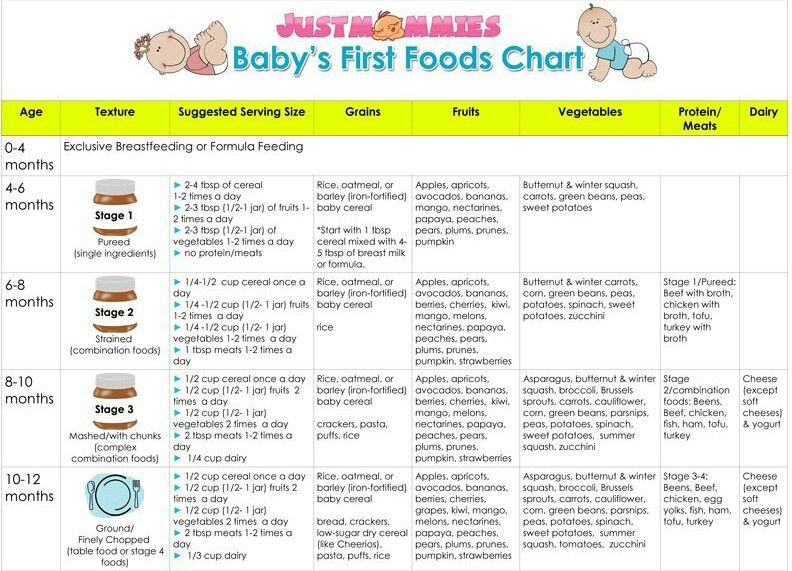 Some babies will even try to grab a spoon.
Some babies will even try to grab a spoon.
Stage 3 Food Ideas
At Stage 3, any kind of food will be right as long as the texture is right. You could serve the food your family is having but make sure the chunks are easy to chew. You need to cut up the food into tinier pieces. Solid food is taking a significant role in their diet and it is important to offer foods that are nutritious. Exposing babies to a variety of foods helps them to develop taste and lays the groundwork for a life-long healthy eating lifestyle. There are a few recommended foods that are a good choice for Stage 3 foods. You could try your own varieties apart from these:
- Any kind of vegetables cooked well.
- Mashed ripe fruits ( mashed or cut bananas are great at this Stage).
- Shredded meat which is well-cooked.
- Cheese that is soft.
- Well-cooked pasta.
- Scrambled eggs.
- Tiny pieces of tofu.
How to Make a Safe Transition From Stage 2 to Stage 3?
Stage 3 foods look very different, feel different and are an entirely different sensory experience for the baby. These foods come in multiple colours and different shapes, with each spoonful presenting a different texture. Instead of one smooth texture, Stage 3 introduces soft, thick, thin, squishy and rough textures. The smell of the food will be different and babies have to work their gums, mouth, jaw and tongue. Stage 3 foods need different motor skills too. Some foods need lesser effort to chew while some may need to be rolled in the mouth, gnawed and chewed. In a nutshell, a child has to make considerable effort to adapt to Stage 3 foods. Here are a few tips on how to start stage 3 foods:
These foods come in multiple colours and different shapes, with each spoonful presenting a different texture. Instead of one smooth texture, Stage 3 introduces soft, thick, thin, squishy and rough textures. The smell of the food will be different and babies have to work their gums, mouth, jaw and tongue. Stage 3 foods need different motor skills too. Some foods need lesser effort to chew while some may need to be rolled in the mouth, gnawed and chewed. In a nutshell, a child has to make considerable effort to adapt to Stage 3 foods. Here are a few tips on how to start stage 3 foods:
- Get your baby to experiment with some “ hard munchies” like celery sticks, cucumber sticks. The aim should not be for them to swallow it but munch it. It is fine if they chew and spit it out.
- The next step should be to progress to solids that will melt in the mouth. Crackers, vegetable sticks, tiny biscuits are good choices.
- The next step will be to offer soft cubes of cooked food like cubed cooked potatoes, cubed cooked carrots or bananas.

- Then try “softer” foods like cooked pasta, muffins or lunch meats.
Once babies are used to the above, they will be ready for Stage 3 foods with mixed textures and different tastes.
Healthy Stage 3 Food Recipes For Babies
A few homemade Stage 3 baby food recipes to help you get started with:
1. Carrot Pasta
A healthy meal with hidden vegetables, this is a great Stage 2 and Stage 3 food recipe for babies and toddlers. It is also a great baby-led weaning lunch or dinner.
Ingredients
- 5 medium carrots.
- ½ dry pasta ( of any shape).
- ½ teaspoon coriander.
- ½ teaspoon of orange zest.
Method
- Fill a saucepan with water to about ¾ of its capacity. Add the carrots and cook them for about 10 minutes. Stick a fork to see if they are cooked. Once cooled, drain the water and transfer it to a blender.
- Boil the drained water in the saucepan and add the pasta.
 Cook for about 5-7 minutes.
Cook for about 5-7 minutes. - Add the coriander and orange zest to the carrots and puree for about 3 minutes. Add water if necessary.
- Transfer the pasta and carrots to the saucepan and mix it well.
2. Cheese and Potato Mash
A great way of including carbohydrates and calcium to your baby’s diet, this is a great recipe that can be made in a variety of ways.
Ingredients
- ½ medium-sized potato.
- 1/3 slice of cheese.
- 2 big spoonfuls of breastmilk (optional).
- 2 big spoonfuls of formula milk ( optional).
Method
- Wash the potato and chop them in cubes.
- Cook the potato pieces in water until soft and mushy.
- Add the breast milk or formula milk to the mashed potato. Mix it well.
- Cut the cheese slice into small pieces of 0.5 cms.
- Add the cheese to the potato mixture and mix well.
- Serve it in your child’s favourite container.

3. Oatmeal With Beets And Carrot
Yummy vegetable breakfast packed with spices and raising makes for a meal that your toddler cannot resist.
Ingredients
- 2 cups of water or milk.
- 1 cup oats.
- ½ red beetroot.
- 1 carrot peeled, chopped and shredded.
- 1 teaspoon cinnamon.
- ¼ teaspoon cloves.
- 1/8 teaspoon nutmeg.
- 2 tablespoon raisins.
Method
- Bring water to a boil in a saucepan and add the carrots, beetroot, cinnamon, cloves, nutmeg and raisins. Give them a stir, cover and cook on low heat.
- Cook this until all the water is evaporated and everything is cooked well.
- Let the mixture cool.
- Once it is cooled, add the oatmeal and blend well in a food processor. Add in extra water, breast milk or formula milk if you need to.
Foods You Should Avoid In Stage 3
Although, Stage 3 is when you would want your child to work on their chewing skills, you must not rush into introducing any kind of food that could result in potential choking or reflux. You must also avoid foods that are heavily salted or sweetened foods. The following could be avoided for a couple of more months:
You must also avoid foods that are heavily salted or sweetened foods. The following could be avoided for a couple of more months:
- Raisins (whole).
- Hard sweets and candies.
- Popcorn.
- Whole peanuts.
- Whole grapes.
- Hot dogs.
- Seeds.
Warnings And Considerations
Paediatricians do recommend some stages of baby food at certain ages. Marked by age and development guidelines, these foods make the jobs of parents easy and get the child to become independent eaters. Age recommendations, however, are more of a guideline. What is important is the comfort level of the child. If your child chokes or refuses to eat Stage 3 food, then leave it and try again after a few days. You child will cough a little at the start as they start experiencing the thicker consistency and lumpier foods. This should not deter you. Keep monitoring their progress and adaptability and make alterations accordingly. The baby formula at Stage 3 can be continued along with new foods introduced.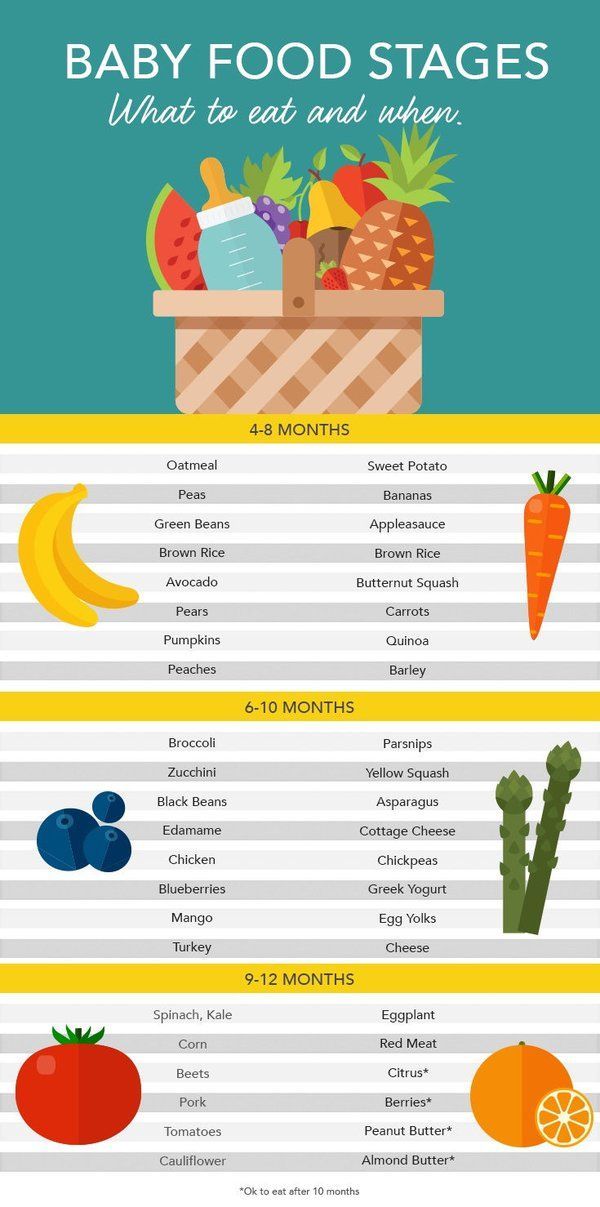 Cow’s milk must not be introduced before the baby completes one year of age. Other than a few exceptions that pose risk to the baby, Stage 3 is when you can introduce a great range of foods to the baby.
Cow’s milk must not be introduced before the baby completes one year of age. Other than a few exceptions that pose risk to the baby, Stage 3 is when you can introduce a great range of foods to the baby.
The transition from Stage 3 food to regular food will not take very long. Your baby will turn one within a few months of starting on Stage 1 foods and eating will become a family activity. Enjoy this final leap of presenting fun and delicious recipes. Keep continuing the effort even if your baby resists it until they adapt to exploring their own tastes.
Also Read:
3 Stages Of Baby Food
Introducing Solid Food To Baby’s Meal
What Should Be First Foods For Baby
8-10 months - Encyclopedia Baby food
Stage 3 - 8-10 months
Levchuk Victoria ©8-10 months - time to study!
Third stage: 8-10 months
The third stage of baby food 8-10 months is a term that refers to baby food, meaning a thicker and more textured section. This stage of baby food also includes the ingredients that the child has been eating for the last 7-8 months.
This stage of baby food also includes the ingredients that the child has been eating for the last 7-8 months.
Some parents define the third stage of baby feeding as the shortest. Foods during this period should be appropriate for the age of the infant who is beginning to learn to "chew" foods and who have completely lost the tongue thrust reflex. Ready-made baby food of the third stage is aimed at children who are aged from 8-10 to 12 months.
The baby has grown up, teeth have appeared, motor activity has increased, it is already possible to introduce food with a thicker consistency with the presence of pieces of different sizes, but not very large. Now the main thing is to help the baby learn to chew and overcome small pieces of food. At this stage, the baby is able to take small pieces of food with his hands and direct them almost exactly into his mouth, then chew it all, the mother should encourage the development of these skills. Therefore, the mother offers the baby finger food: unsweetened cookies, apple slices, pieces of cheese or boiled carrots.
Breastfeeding continues on demand, but it is already possible to give the baby to drink from a cup, of course the best drink is water, but you can also offer compote or yogurt. Breastfed babies may refuse extra fluids, but don't worry. When feeding on demand, the baby receives enough liquid, at this stage it is important for the mother to provide a choice for the baby.
Your baby's diet should be varied. Vegetables are boiled until soft, and boiled meat passes through a meat grinder, and then only warms up. Variety includes vegetables, meat, fruits, legumes, a small amount of fish, kefir, eggs (although you can postpone the entry to a later period), cheese, liver.
Be sure to boil the eggs thoroughly and never offer raw eggs in any form, so as not to become infected with salmonella. The main thing at every meal is to offer the child finger food, for example, pieces of carrots, pears, toasted bread with a piece of butter. Remember that sugar and salt are still not recommended! A breastfed child has three meals a day, while artificial children have five meals a day. Between main meals, you can give your baby light snacks yogurt, apple, kefir, bread in small quantities.
Between main meals, you can give your baby light snacks yogurt, apple, kefir, bread in small quantities.
The third stage of baby food includes products that still have the lowest index on the allergy scale, but some dairy products and wheat products are introduced at this stage. As a rule, during this period, those foods that are more fibrous, slightly more acidic and contain more protein are introduced. These products should be well tolerated and absorbed by the child.
Also during this period, most parents introduce some spices, raw fruits and pasta.
Remember that babies don't have molars until 14-18 months, so foods should be mashed with small chunks of structured food and easily pass between the gums.
Social networks:
Content
- What is children's food 2 stages?
- Stage Identification by Brand
- What is the difference between Stage 1 and Stage 2 meals?
- When and how should I start feeding my baby 2nd stage complementary foods?
- What are your baby food options for stage 2?
- Store-bought baby food stage 2.

- Homemade Baby Food Stage 2
- Store-bought baby food stage 2.
- Conclusion
Accompanying your child through the different stages of learning how to eat real food is an exciting journey. Sometimes, along with a sense of pride - - you can feel a little confused. How should you navigate milestones?
What is stage 2 baby food?
Let's start from the beginning: what do the stages of baby food mean?
Rome wasn't built in a day, and your child's digestive system won't jump from liquid to solid in one day either. That's what baby feeding stages are for - to help your baby manage the mechanics of eating and ease the transition to your baby's digestive system.
Brand milestone identification
Although the different stages of baby food are not standardized (if they were, your life would be easier!), most popular brands more or less follow these four stages:
- Stage 1: 4 to 6 months one ingredient)
- Stage 2: 6 to 9 months (thicker texture, strained or puréed)
- Stage 3: 10 to 12 months (porridge with soft chewy small pieces)
- Stage 4: After 12 months (food that you can eat with your fingers and small soft pieces of food that you share with your dinner)
What is the difference between eating the first and second stages?
Stage 1 food is quite watery. They turn into a smooth paste that runs off a spoon easily, so stock up on bibs. These products usually consist of one ingredient: oatmeal, apples, carrots. Your child will start eating about half a teaspoon of this.
They turn into a smooth paste that runs off a spoon easily, so stock up on bibs. These products usually consist of one ingredient: oatmeal, apples, carrots. Your child will start eating about half a teaspoon of this.
Stage 2 food becomes more exciting. They are strained or ground into a thick paste. They are made from a combination of foods that can include legumes and even meat or fish. They can combine flavors, such as fruit and vegetable blends. Your child's appetite is growing and you will have to keep up with larger portions.
When and how should I start feeding my baby 2nd stage complementary foods?
Around the age of 6 to 9 months, your baby is probably ready to switch to stage 2 complementary foods. Not every child will stick to this schedule, simply because every child is a separate world.
Here are a few signs that your baby is ready to move on:
- Tongue reflex: At around five months, your baby will begin to lose the tongue thrust reflex and will not immediately push out the food you are trying to feed.

- More Please: They will easily eat the first stage foods and look hungry to eat more.
- Variety: They ate foods from all food categories (vegetables, fruits, legumes, grains, meat) and showed no allergies or intolerances.
- Enjoyment: They easily eat a spoonful of food in stage 1, swallow and swallow with pleasure.
At this exciting stage, feel free to give your child most of the foods. By offering them a wide range of flavors and textures, you give them the foundation for a healthy diet and also make it easier for you. Be aware of the following safety considerations:
- Choking Hazard: Avoid nuts, seeds, and popcorn at this stage. And don't forget to cut round foods like grapes and hot dogs lengthwise.
- No honey: Babies under 12 months old should not be given honey as it can lead to botulism.
- No Juice: Follow AAP guidelines and stick to breast milk, formula, or a little water and stay away from juices.

- Feeding safely: Always fasten your child to a high chair and watch him while he eats.
And if you're curious about peanuts, here's the scoop: 2017 A report from the National Institutes of Health suggests giving babies foods containing peanuts as early as 4 months of age. (Wait up to 6 months for children with mild to moderate eczema.)
Surprised? Do not be. A recent study showed that Israeli children rarely suffer from peanut allergies because they have been chewing bamba, a peanut-based snack, as early as 3 months old. Talk to your doctor about safe ways to include peanut products in your baby's diet.
What are your baby food options for stage 2?
What is included in the stage 2 baby food menu? Basically, you can go the store or home route. Or you can mix both depending on how much time you have. It depends on you and your personal schedule.
Here are some delicious ideas for both.
Store-bought baby food stage 2.

- Plum: These organic blends come in easy-to-carry bags. Try pear, spinach and peas, or banana and pumpkin.
- Beech-walnut: Available in tins and bags. Serve a few apples and bananas or pineapple, pear and avocado.
- Best in the world: Another organic option, in bags or jars. Try sweet potatoes, barley and chickpeas, or pasta with tomatoes and white beans.
- Gerber: A classic served in plastic jars, jars or bags. Flavor combinations include peach mango and dinner with oatmeal or chicken noodles.
Remember to keep an eye on your baby while he eats. Bags are convenient, but caps can be a choking hazard. Glass jars can break, so keep them out of the reach of children. Your child should always enjoy snacks and meals under close adult supervision.
Homemade Baby Food Stage 2
Cooking up a storm for your baby's nascent taste buds at this stage shouldn't be a daunting task. Here are some recipes to help you. (You can find more baby food recipes here.)
Here are some recipes to help you. (You can find more baby food recipes here.)
Don't skimp on spices and herbs: your little one will appreciate the extra flavor and the micronutrients they contain will boost their immune system.
- Apple, walnut and carrot: Cook the ingredients until they are soft when checked with a fork. Drain off some of the water, but set it aside in case you need to dilute the mixture. Sprinkle with a little curry and stir.
- Blueberries and chickpeas: You can make your own chickpeas or use ready-made ones to save time. Mix equal amounts of blueberries and chickpeas. Mix and add breast milk, formula, or water to get the right consistency. You can also add some rice for added appeal and texture.
- Salmon with fried zucchini and fennel: Drizzle salmon and vegetables with oil and roast for about 15 minutes. Add chopped parsley and stir. You can dilute formula with breast milk, formula, or water.


